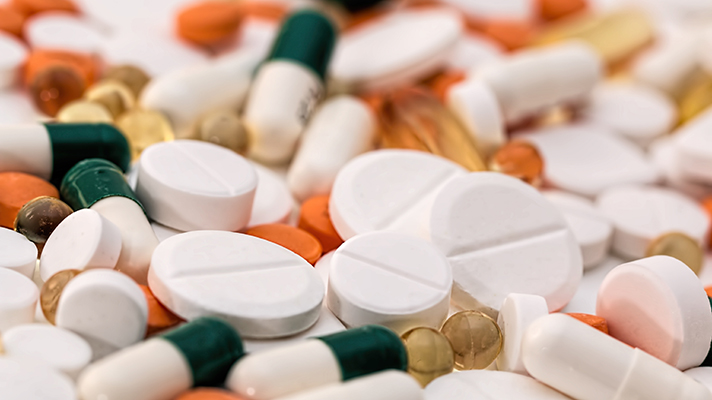Drug addiction is a complex and devastating public health issue affecting millions worldwide. Traditional drug rehabilitation therapies have often relied on a combination of counseling, group therapy, and support groups to help individuals overcome their addictions. Anyway, in recent years, there have been significant innovations in drug rehabilitation therapies that offer new hope and more effective approaches to treating addiction. These innovations leverage technology, neuroscience, and psychology advancements to provide more personalized and evidence-based treatment options.
The most important Innovations in recent years
1. Telemedicine and Digital Therapies:
The emergence of telemedicine and digital health platforms has transformed the landscape of drug rehabilitation therapies. Patients can now receive therapy and counseling sessions from the comfort of their homes, greatly enhancing accessibility and convenience. These digital platforms provide valuable self-monitoring tools, goal-setting features, and progress-tracking options. Mobile apps and wearable devices offer real-time feedback and support, empowering individuals to maintain their journey towards recovery.
2. Pharmacotherapy:
Breakthroughs in pharmacotherapy have given rise to medications that play a pivotal role in addiction treatment. Drugs such as buprenorphine, methadone, and naltrexone have demonstrated their efficacy in alleviating cravings and withdrawal symptoms associated with opioids and alcohol. The incorporation of medication-assisted treatment (MAT) into rehabilitation programs holds great promise, as it has shown substantial improvements in long-term recovery outcomes.
3. Neurofeedback and Brain Stimulation:
The field of neuroscience has ushered in cutting-edge rehabilitation therapies. Approaches like neurofeedback and transcranial magnetic stimulation (TMS) are now under scrutiny for their ability to target the brain’s reward circuitry, helping individuals regain control over cravings. These non-invasive methods hold the promise of revolutionizing addiction treatment by directly influencing neural pathways linked to addiction.
4. Virtual Reality (VR) Therapy:
Virtual reality technology has made its way into the world of drug rehabilitation. VR therapy can simulate environments and situations that trigger cravings and teach patients how to confront them in a controlled setting. This immersive therapy can be a valuable tool for desensitization and relapse prevention.
5. Art and Music Therapy:
Innovative methods like art and music therapy are gaining prominence in drug rehabilitation. These therapies offer individuals alternative avenues to express emotions and confront stress, assuring a non-verbal outlet for processing trauma and addressing the underlying psychological factors contributing to addiction.
6. Peer Recovery Coaching:
Peer recovery coaching involves trained individuals who have personally experienced addiction and recovery assuring support and guidance to those currently in treatment. This peer-to-peer approach can be highly effective in building trust and offering real-life strategies for overcoming addiction.
7. Community-Based Programs:
Innovations in drug rehabilitation extend beyond clinical settings. Community-based programs, engaging individuals in meaningful activities and fostering a sense of belonging, have demonstrated success in lessening relapse rates. These initiatives underscore the significance of social connections and a supportive environment in the recovery journey.
In conclusion, the field of drug rehabilitation is witnessing a promising wave of innovation. These groundbreaking approaches harness the power of technology, neuroscience, and holistic methods to provide tailored and highly effective treatment for individuals battling addiction. As our understanding of addiction deepens, we can anticipate even more innovations on the horizon, offering greater chances of success and improved quality of life for those on their journey to recovery.
How to find the best rehabilitation center
Finding the best rehabilitation center for yourself or a loved one is an elemental step toward recovery from addiction or other medical conditions. Here’s a step-by-step guide to aid you if you want to Choose an Oregon drug rehab center:
1. Assess Individual Needs:
Start by evaluating the specific needs of the person seeking treatment. Consider factors like the type of addiction or condition, the severity, any co-occurring disorders (e.g., mental health issues), and personal preferences.
2. Verify Accreditation and Licensing:
Ensure that the facility is accredited by relevant organizations like The Joint Commission or CARF (Commission on Accreditation of Rehabilitation Facilities). Confirm that the staff, including therapists and medical professionals, are licensed and experienced in addiction treatment.
3. Assess Treatment Approaches:
Different centers may offer varying treatment approaches such as detox, counseling, medication-assisted treatment (MAT), holistic therapies, and more. Ensure that the center offers the type of treatment that ranks with the individual’s needs and preferences.
4. Check Insurance Coverage:
Contact the rehabilitation center and your insurance provider to verify what services are covered and the associated costs. Understand any out-of-pocket expenses and payment options available.
Benefits of drug rehabilitation centers
Here are some key benefits of rehabilitation centers:
1. Professional Medical Care:
Rehabilitation centers are staffed with trained and experienced healthcare professionals, including doctors, nurses, therapists, and counselors. They assure expert medical care and supervision tailored to the individual’s needs.
2. Structured Environment:
Rehabilitation centers assure a structured and controlled environment, which can be essential for individuals struggling with addiction or mental health issues. This structure helps establish routines and promotes discipline.
3. Detoxification:
Many rehabilitation centers offer medically supervised detoxification programs to safely manage withdrawal symptoms during the early stages of addiction recovery.
Welcome to our blog! My name is Yuvraj Kore, and I am a blogger who has been exploring the world of blogging since 2017. It all started back in 2014 when I attended a digital marketing program at college and learned about the intriguing world of blogging.

